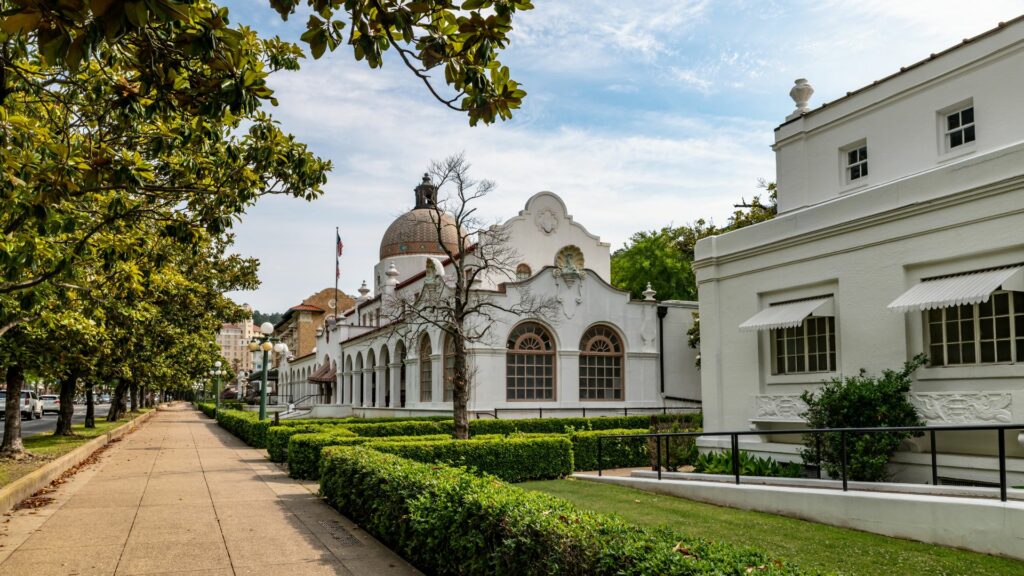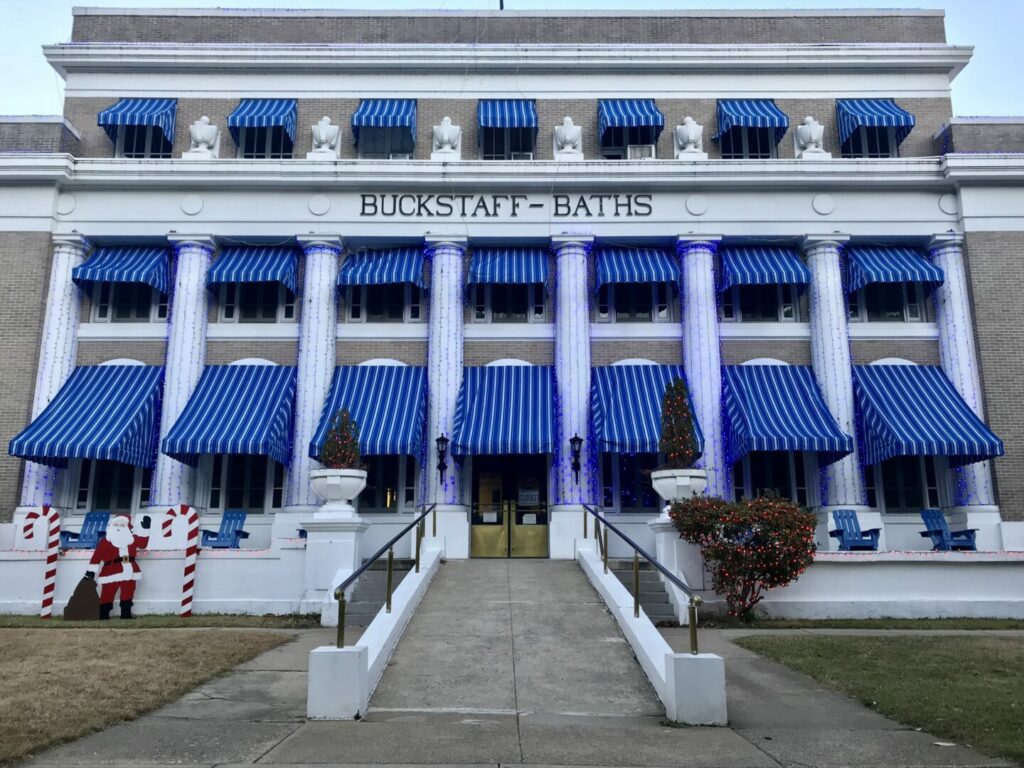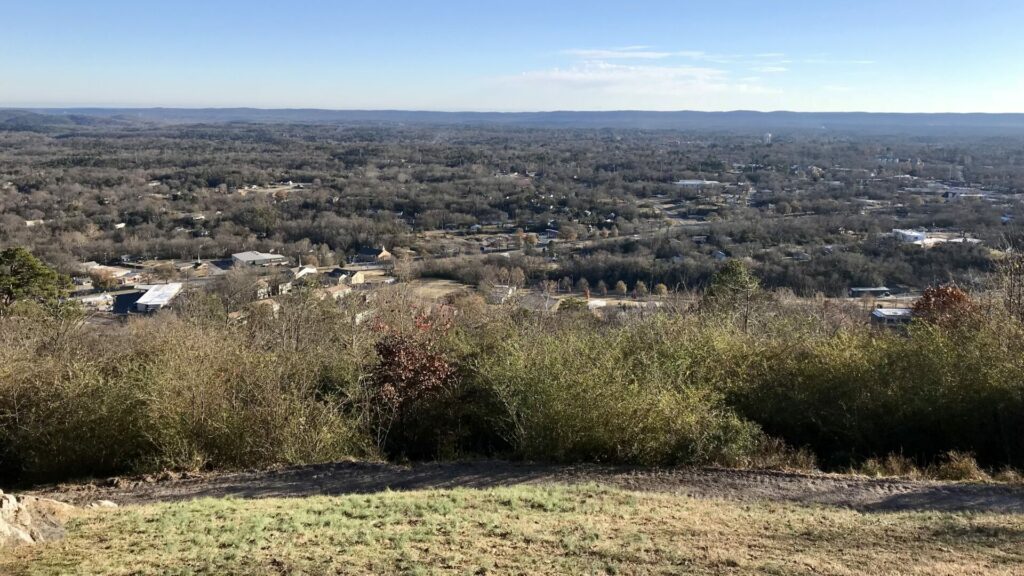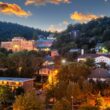Table of Contents Show
While Yellowstone National Park may be the best-known park for thermal features, there’s another small national park that also protects hot springs in the Midwest. It’s called Hot Springs National Park and it’s even older than Yellowstone, as it received federal protection in 1832!
Let’s dive in and learn more about this unique urban national park and discover what you can do there when you visit!
Where Is Hot Springs National Park?
Hot Springs National Park is located in Hot Springs, Arkansas, less than an hour southwest of Little Rock. I-30 is about 18 miles east of the park while Highways 70, 7, 128, and 270 all lead into Hot Springs. Lake Hamilton lies to the south, and Lake Ouachita lies to the northwest.
Hot Springs National Park is unique in that it’s an urban park. Whereas most national park sites are remote or encompass large acreage, Hot Springs is downtown. There are shops and restaurants along Bathhouse Row. The park is only 5,550 acres.
When Did Hot Springs National Park Become A National Park?
In 1921, Hot Springs National Park became the 18th national park. However, long before, the area was protected as the Hot Springs Reservation.
President Andrew Jackson set aside four sections of the land on April 20, 1832, for protection from settlement and business ventures. But no laws were passed and the protection wasn’t enforced.
When Stephen Mather became head of the newly formed National Park Service in 1916, he took a special interest in the Hot Springs Reservation. As a result, it was designated as a national park on March 4, 1921.

What’s So Special About Hot Springs National Park?
Hot Springs National Park preserves the natural hot springs and historic architecture of Bathhouse Row. It’s a national park that emphasizes good health and well-being.
At one time, Hot Springs Reservation was the most visited health and wellness resort in America as the thermal waters provided healing and relaxation for many wealthy individuals.
Long before it became a tourist attraction, the hot springs of the area were considered sacred by the Native Americans. The water that surfaces is thousands of years old because of the depth at which it travels to reach the earth’s core and returns.
Visitors enjoy learning about the history and culture at Hot Springs by walking along Bathhouse Row. This historic section features architecture from the Victorian, Classical, and Spanish Mission periods. While most of the bathhouses are no longer operating, you’ll find two still available for public appointments.

3 Most Popular Attractions In Hot Springs National Park
While we usually suggest at least one hike at each national park, Hot Springs National Park isn’t known for its hiking trails. Although there are some, we suggest enjoying the trails only after you’ve experienced more of the park’s history.
You can enjoy Hot Springs in a day because of its small acreage. Here are our top three recommendations.
1. Stroll Bathhouse Row
Eight bathhouses were constructed from 1892-1923 and still currently line Bathhouse Row. These historic buildings are open to the public and now house a brewery, a visitor center, an emporium, and other businesses.
The Quapaw Bathhouse offers private baths, public pools, and modern-day spa services. The Buckstaff Bathhouse is the only facility that has never fully closed since it started offering spa baths.
Pro Tip: You’ll Love Exploring These Arkansas State Parks!
2. Soak In the Springs
You won’t find soaking opportunities outside at Hot Springs National Park. But you can make an appointment at either the Buckstaff or Quapaw Bathhouse.
The Buckstaff Bathhouse was built in 1912, while the Quapaw Bathhouse was constructed in 1922. It’s easily recognizable because of its American Indian motif and tiled dome. Contact either facility to schedule an appointment and learn more about their spa services.

3. Tour the Fordyce Bathhouse Museum And Visitor Center
If you only have a couple of hours to enjoy this urban national park, make sure to tour the Fordyce Bathhouse Museum. This bathhouse operated from 1915-1962 and was considered the best facility.
In 1989, it became the visitor center for Hot Springs National Park. Today, visitors can tour massage rooms, dressing rooms, the music room, the gymnasium, and other historic parts of this old bathhouse.
As we mentioned, Hot Springs isn’t known for its hiking trails, but there are 26 miles of trails running throughout the area. If you spend more than a day here, we suggest finding a suitable trail in the Hot Springs and North Mountain section or the West Mountain area.
These are short, interconnected trails. If you prefer a longer adventure, consider the Sunset Trail, which is 10 miles one way through remote areas of the park.

Best Places For Camping Near Hot Springs National Park
Gulpha Gorge Campground is the only option inside Hot Springs National Park. It offers full hookup sites and restrooms but no showers. Sites are $34/night and can be reserved on Recreation.gov. It’s the best option for RVers wanting to stay near the national park.
If you prefer a campground with all of the amenities, the local KOA is nearby. It offers a free shuttle service, a mini golf course, a propane refill station, a seasonal swimming pool, a pet playground, a fishing pond, laundry facilities, and more.

Keep Exploring: When you’re done with Hot Springs, head to one of these Can’t Miss National Parks on the East Coast!
Is Visiting Hot Springs National Park Worth It?
Hot Springs National Park is one of the most unique sites in the country because of its urban location and rich history.
While other parks protect grand landscapes and fragile exosystems, Hot Springs ushers visitors into the era of Al Capone, Frank Costello, and other mobsters. Baseball players, military men, and government officials would also soak in the healing waters of these thermal springs.
Today, you can walk those same streets and visit those same bathhouses. And if you have time, you can enjoy the beauty of central Arkansas as you walk along the hiking trails.
There’s a lot to learn at this small national park outside Little Rock. Have you ever visited Hot Springs National Park?






